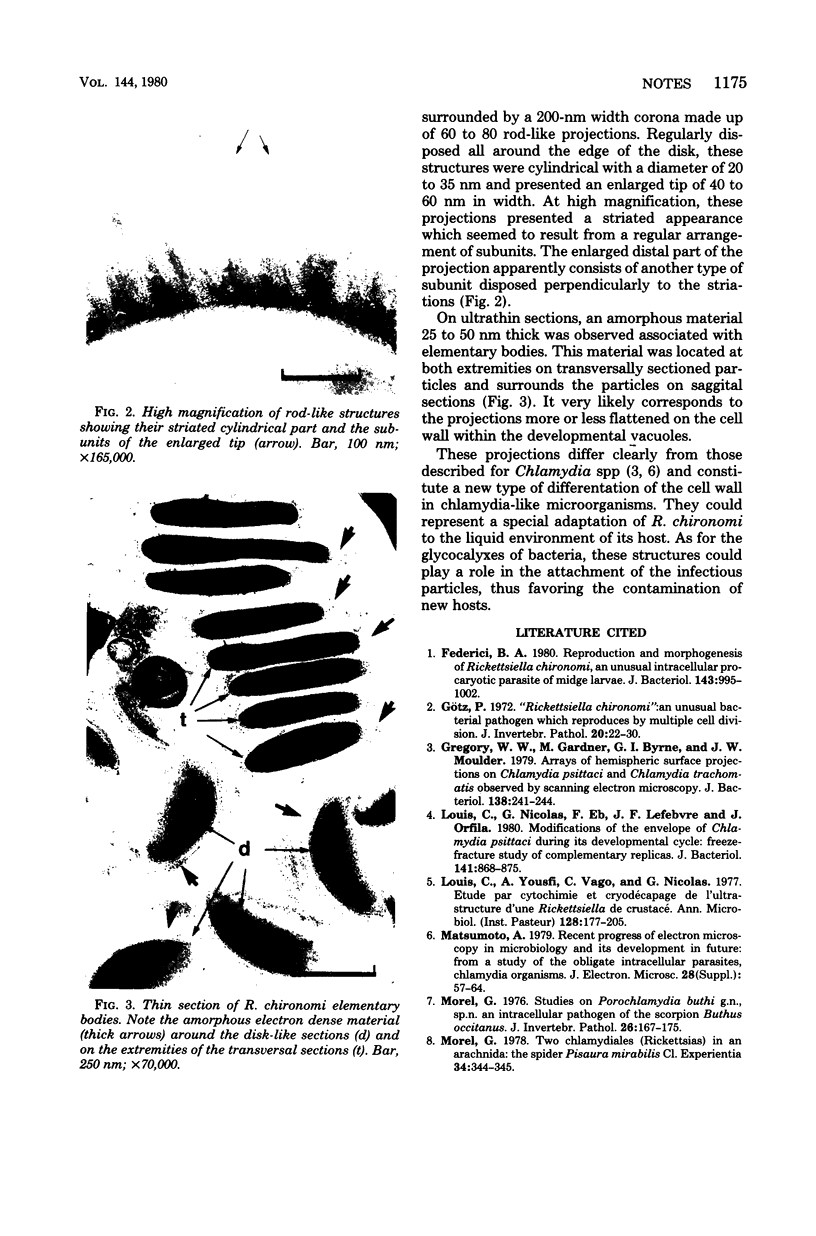Abstract
Projections are described in a chlamydia-like organism similar to Rickettsiella chironomi. These projections were present only on the edge of the disk-like elementary bodies; rod-shaped, they were found to be composed of repetitive subunits.
Full text
PDF

Images in this article
Selected References
These references are in PubMed. This may not be the complete list of references from this article.
- Federici B. A. Reproduction and morphogenesis of Rickettsiella chironomi, an unusual intracellular procaryotic parasite of midge larvae. J Bacteriol. 1980 Aug;143(2):995–1002. doi: 10.1128/jb.143.2.995-1002.1980. [DOI] [PMC free article] [PubMed] [Google Scholar]
- Gregory W. W., Gardner M., Byrne G. I., Moulder J. W. Arrays of hemispheric surface projections on Chlamydia psittaci and Chlamydia trachomatis observed by scanning electron microscopy. J Bacteriol. 1979 Apr;138(1):241–244. doi: 10.1128/jb.138.1.241-244.1979. [DOI] [PMC free article] [PubMed] [Google Scholar]
- Götz P. "Rickettsiella chironomi": an unusual bacterial pathogen which reproduces by multiple cell division. J Invertebr Pathol. 1972 Jul;20(1):22–30. doi: 10.1016/0022-2011(72)90076-6. [DOI] [PubMed] [Google Scholar]
- Louis C., Nicolas G., Eb F., Lefebvre J. F., Orfila J. Modifications of the envelope of Chlamydia psittaci during its developmental cycle: freeze-fracture study of complementary replicas. J Bacteriol. 1980 Feb;141(2):868–875. doi: 10.1128/jb.141.2.868-875.1980. [DOI] [PMC free article] [PubMed] [Google Scholar]
- Louis C., Yousfi A., Vago C., Nicolas G. Etude par cytochimie et cryodécapage de l'ultrastructure d'une Rickettsiella de crustacé. Ann Microbiol (Paris) 1977 Aug-Sep;128(2):177–205. [PubMed] [Google Scholar]





